Chapter 5: Dancers
By training, Mom was as much a dancer as a painter. But it was less acceptable and safe for a 75 year old to be dancing on stage. In general, it was more satisfying for her to put dance in her paintings. One way was by painting dancers. Mom knew exactly how dancers held themselves and moved. So when her classes brought in dancers as models, it was a natural for her. She was also becoming adept with pastels at that time. So she could follow her master in this area, the impressionist Degas, in a new way that fit her abstractionist bent. In these first two (6a-b), notice her use of color in the background to intensify the mood of the scene.


The class at Clackamas Community College was fortunate in being able to get actual ballet dancers from a ballet class at the college to serve as models. I remember Mom ecstatically showing me her work from that time, how pleased she was with her new work and especially at being able to have ballet dancers as models, Degas' own subjects. Again, pastels were her favorite medium (6c, 6d, 6e).
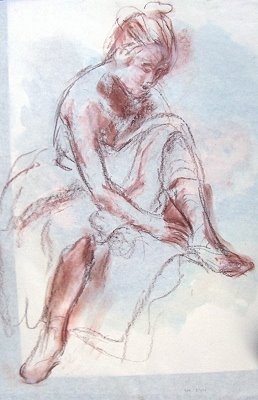

Sometimes she would use simple black lines on white (6f):

Sometimes she did the same model twice, once in pastel and once in oil (6g-h).


Something Degas did not have the opportunity to do was to paint a dark-skinned ballet dancer. Mom took advantage of the contrasting colors and added a complementary background (6i).

In all the depictions so far, the dancers are professional and the mood elevated. Mom was not, however, above drawing ordinary people simply dancing to have fun. I will end this chapter with selections from a small sketchbook I discovered after her death, only 3.5 by 4.75 inches in size. So do not bother clicking on the images: they about as large as you see them already.




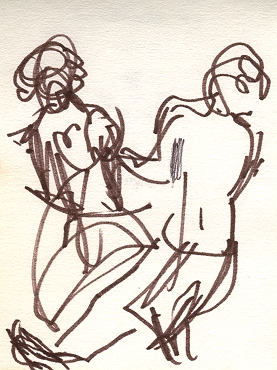

And there are also the musicians who fuel all this energy:
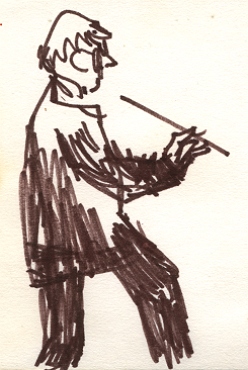
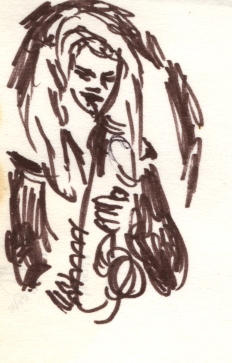
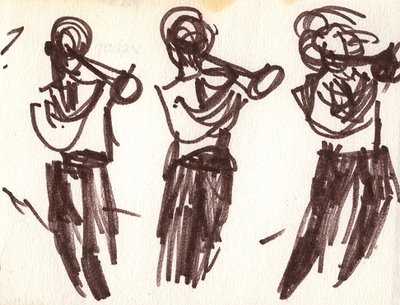
Dance and music are enduring themes in Mom's art. We will be visiting them again.


The class at Clackamas Community College was fortunate in being able to get actual ballet dancers from a ballet class at the college to serve as models. I remember Mom ecstatically showing me her work from that time, how pleased she was with her new work and especially at being able to have ballet dancers as models, Degas' own subjects. Again, pastels were her favorite medium (6c, 6d, 6e).


Sometimes she would use simple black lines on white (6f):

Sometimes she did the same model twice, once in pastel and once in oil (6g-h).


Something Degas did not have the opportunity to do was to paint a dark-skinned ballet dancer. Mom took advantage of the contrasting colors and added a complementary background (6i).

In all the depictions so far, the dancers are professional and the mood elevated. Mom was not, however, above drawing ordinary people simply dancing to have fun. I will end this chapter with selections from a small sketchbook I discovered after her death, only 3.5 by 4.75 inches in size. So do not bother clicking on the images: they about as large as you see them already.






And there are also the musicians who fuel all this energy:



Dance and music are enduring themes in Mom's art. We will be visiting them again.

0 Comments:
Post a Comment
<< Home